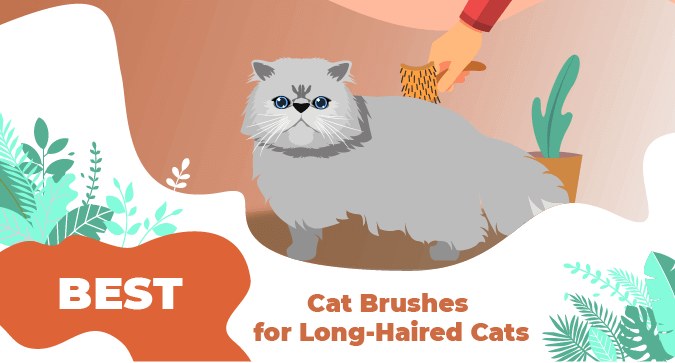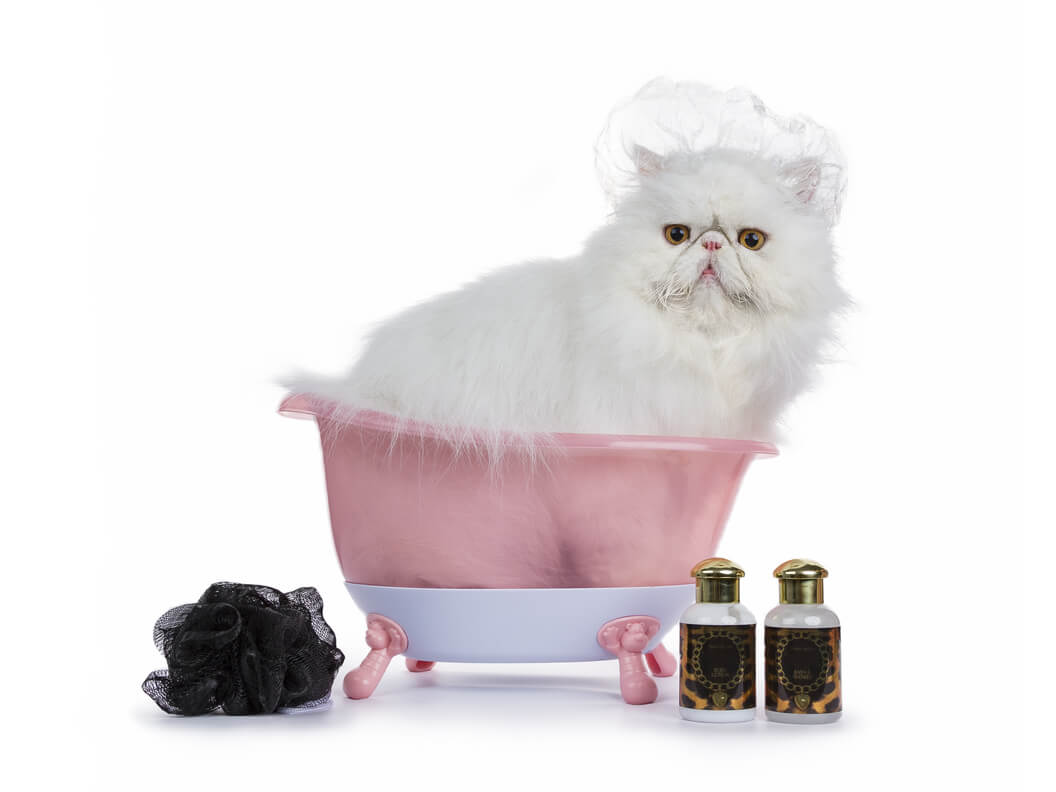Kitten Feeding Guide By Age
This page contains affiliate links. We may earn money or products from the companies mentioned in this post through our independently chosen links, which earn us a commission.
To be sure your kitten grows and stays healthy, you will want to provide food appropriate for their age, lifestyle and specific nutritional needs. Your kitten needs the right balance of proteins, fats, carbohydrates, vitamins, and minerals as well as essential amino acids such as taurine.
What Do Kittens Eat?
Newborn kittens get their nutrition from their mother through nursing. Kitten milk replacer can be used if the kitten is unable to get milk from the mother for any reason.
At around week four kittens should start being weaned and solid food or gruel can be introduced. Look for protein-rich kitten food to support their growing body and energy level. Calcium supports her teeth and bones and DHA helps support healthy brain and vision development. Once your kitten has been completely weaned off of the mother’s milk, they do not need milk such as cow’s milk, in other forms.
Kitten Feeding Chart By Age
Below is a chart on approximately how much and how often to feed your kitten at each stage of their life. This can change based on whether your kitten is still nursing from their mother or receiving a formula feeding. Always consider their breed, general health and conditions.
Always talk to your vet if you are unsure about your kittens feeding guidelines.
| Age | Weight | Amount per Feeding | Frequency |
| Week 1 | 1.8oz to 5.3oz | 2ml to 6ml | Every 2 hours |
| Week 2 | 5.3oz to 8.8oz | 6ml to 10ml | Every 2-4 hours |
| Week 3 | 8.8oz to 12.3oz | 10ml to 14ml | Every 3 to 4 hours |
| Week 4 | 12.3oz to 15.9oz | 14ml to 18ml | Every 4 to 5 hours |
| Week 5 | 15.9oz to 19.4oz | 18ml to 22ml | Every 5 to 6 hours |
| Week 6 to 8 | 19.4oz to 29.9oz | Weaned (requiring wet kitten food) | Every 6 hours |
| Week 9 to 12 | 2lbs to 3lbs | Wet + Dry kitten food | 4 times a day |
| 4 to 6 months | 4lbs to 6lbs | 1/3 to 1 cup | 3 times a day |
| 6 months to 1 year | 6lbs to 10lbs | Food label recommendations | 2 times a day |
| Adulthood | 8lbs to 10lbs | Food label recommendations | Once or twice a day |
| Senior | 7lbs to 8lbs | Custom diet plan | Vet recommendation |
0 – 1 Week Old
A new kitten should nurse vigorously and can nurse up to 45 minutes at a time. If the kittens are orphaned, they need to be bottle-fed every 2 hours.
1 Week Old
To meet your kitten’s nutritional needs, they are supposed to nurse for around 45 minutes, every two hours, during the first week.
Bottle feed orphans every 2 – 3 hours or until the kittens are full but not bloated.
2 Weeks Old
A two weeks old, kittens can normally consume their daily intake in around 4 meals per day every 2 to 4 hours.
Feeding orphans will remain every 2 – 3 hours until kittens are full but not bloated.
3 Weeks Old
Kittens begin to need feedings every four to six hours starting at 3 weeks. Weaning should begin between three to four weeks of age.
Bottle feeding orphaned kittens can continue every 3 – 4 hours, but also begin the weaning process. At this stage kittens may start lapping from a shallow bowl.
4 Weeks Old

At 4 weeks kittens can usually drink and eat gruel from a shallow dish. You can start by making gruel by mixing milk replacer with a small amount of kitten food. Offer food in a flat saucer. Your kitten’s nose should be carefully dipped into the mixture two or three times a day until they begin to lap it up. This usually takes anywhere from one to three days.
Weaning should be done gradually and bottle feeding an orphan should be continued every 4 hours while they are learning to eat solid foods. Introduce food and gruel the same way.
5 Weeks Old
You can now feed your kittens gruel 4 times a day but you will want to offer dry food and water at all times. The amount of milk replacer or moisture should be decreased daily until they are eating the wet or dry food with little or no additional moisture. Some kittens will not like food or any kind. If the mother is still around, continue the weaning process.
If your kitten is a reluctant eater, try mixing any meat-flavored human baby food with a little water. The meat flavor is often more appealing to the picky eaters. Be sure the type of baby food you buy does not contain onion powder because this ingredient can cause problems in kittens.
6 – 8 Weeks Old

Kittens should be eating canned and dry food well. The kittens need at least three meals daily. Keep in mind that a kitten at this age has a stomach roughly the size of an acorn and while they may not eat much at a single sitting, they like to eat at frequent intervals throughout the day. The mother cat, should only be allowing brief nursing sessions, if any at this stage.
Offer wet food 2-3 times a day (a kitten can eat a little over one can of cat food per day). You can start offering dry food at this point but soaking it in a few tablespoons of warm fresh water can help ease the transition or try offering a bowl of dry kibble and water for them to eat and drink when they want.
By the 8 weeks mark your kitten should be drinking water and eating on their own entirely. Most 8-week-old healthy kittens weigh around 2 pounds, which means they should be taking in around 162 calories per day.
9 To 12 Weeks Old
At eight weeks, a kitten would be fully weaned. They may try to nurse on occasion if the mother is around, but they should already be eating solid food twice a day. It is important that you feed food that is labeled specially formulated for kittens in the first year.
6 Months To 1 year
Cats at 6 months old should still be eating a food specifically designed for kittens. All cats are obligate carnivores and growing kittens need a high fat diet with plenty of real meat. The 6-month mark is the most rapid period of growth in a cat’s life, and their need for “extra” calories and nutrients starts to slow down.
Adulthood
Cats are considered to be adults by the time they are 1 year old. It is not unheard of for them to live up to 20 years or longer. This time between kittenhood and the senior years is young adulthood, and it is important to the ideal nutrients for this life stage.
Once cats reach adulthood, their dietary needs change from kittenhood, as their metabolism begins to slow down, the body matures and the activity levels change. It is also around this stage that your cat’s diets might need to address specific needs, such as weight control formulas for over or underweight cats. Also, large breed cats like Maine Coons, take a little more time to mature. They may need to continue eating a kitten formula until between 18 months of age and 2 years of age.
Senior

Diets for senior cats tend to have a lower caloric content but still include the ideal amounts of vitamins and nutrients for a maturing feline body. Look for options with essential nutrients and fewer calories.
Cats are considered to be seniors at around 7 to 10 years of age and their bodies can go through certain changes at this age that make them more prone to gaining weight, developing arthritis or other health conditions. Therefore, a senior cat diet is recommended. There are exceptions, especially if your cat has food sensitivities or needs a prescription diet. Your veterinarian can help you determine what is best for your cat.
How Much Wet Food Or Dry Food To Feed A Kitten?
Your kitten’s weight should help to determine approximately how many calories they should be getting each day. Look at the label on your kitten’s food to see how many calories (kcal) a can for canned food, or calories (kcal) per cup for dry kitten food it offers. To determine how much to feed your kitten each day, divide their caloric needs by the food’s caloric content. Finally, divide this amount by the number of meals you plan to offer each day to get each meal’s serving size.
When To Feed A Kitten

Once you have determined what to feed your kitten and how much, it is time to create a feeding schedule that works for everyone. You can feed your kitten anywhere from one to three times a day, as long as you do not give her more than her total daily calorie needs.
It is best to use your kitten’s name when feeding to help them learn their name, as well as associating it with a positive activity. Creating a routine and feeding them at the same time each day can help your kitten feel secure and will also help in forming a bond between you both.
You can start by putting dry kibble in your kitten’s bowl in the morning and allowing them to graze throughout the day. However, if a twice-a-day schedule works better, give them half the daily amount of food in the morning and the other half in the evening.
This is the same for wet food or a combination of wet and dry cat food. It is important to be sure that the wet and dry food combined meets the total amount of calories she needs in a day.
Make Sure Your Kitten Has Water
Fresh, clean water is as important to your kitten’s health and well-being. Hydration keeps their bodies developing and running smoothly while growing and maturing. Rinse and refill your kittens water bowl during every feeding and thoroughly clean it at least once a week.




